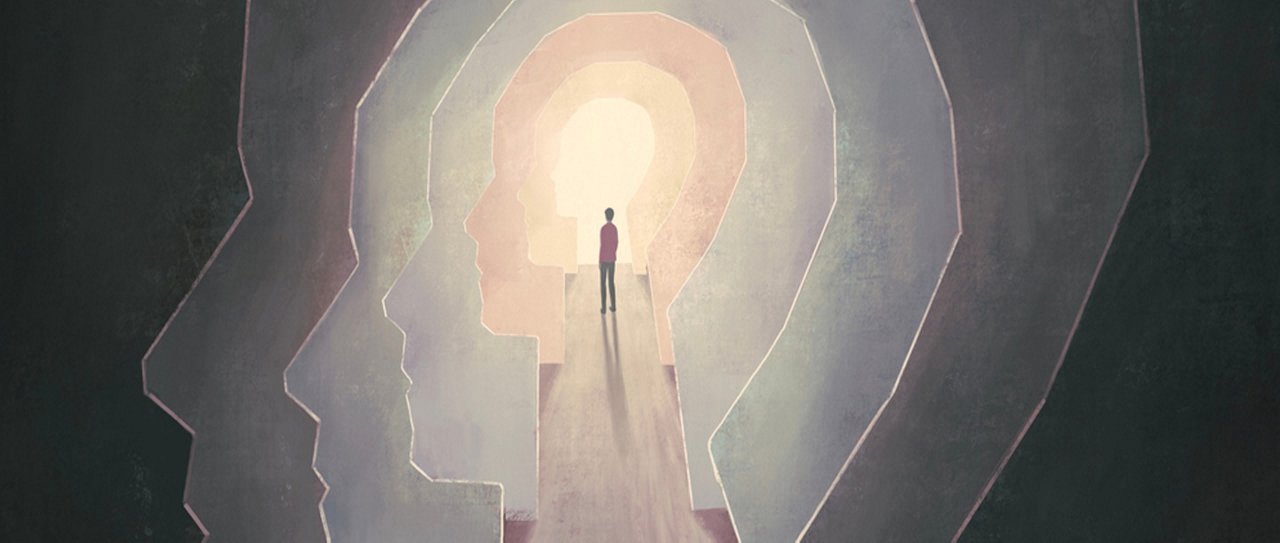Breaking through mental health challenges, one brick at a time

When I was 16, I talked to a doctor about my wall.
My wall would appear every few weeks. It seemed a thick glass surface, translucent but impermeable, and it would grow. It grew taller and taller as I watched, looming insurmountable, and I would just stare at it.
The wall was my best way of describing a feeling I would frequently have. If something significant was due at school, or if I needed to have a challenging conversation with a friend, the wall would go up. And it would stay up.
My wall was frustrating. I would know what I needed to do and why I had to do it, and I would feel all the urgency around an upcoming deadline or event. I just couldn’t ever start. And that made me deeply anxious, all of the time.
So, when I was 20, my wall was diagnosed as part of a general anxiety disorder.
According to the National Institute of Mental Health (NIMH), symptoms of general anxiety disorder include restlessness, fatigue, difficulty concentrating, irritability, headaches, persistent feelings of worry, and difficulty with sleep.
These were all true for me, just not comprehensive.
Throughout college, I struggled with other things. Grief and loss, coupled with geographic relocation and school stress, led to persistent feelings of loneliness and hopelessness.
I needed help, so I started therapy. For me, it was a protected place to process my own thoughts and have someone listen. It was a place to outline the root causes of some of the feelings I was experiencing each day and connect them all together. I learned how to push through my wall and accomplish what I needed to, albeit temporarily.
I knew that college students were struggling with stress, depression, and anxiety at an alarming rate. “Perhaps it’s just a phase, or my age, or my circumstances,” I would tell myself. “It’ll pass.”
By the end of 2021, 35% of North Carolinian adults were experiencing symptoms of anxiety or depression. It’s sadly quite common, especially on this side of the COVID-19 pandemic. And we’re paying attention to mental health in a different way these days, fighting against the stigma. According to the American Psychiatric Association, more than half of people with mental health disorders still don’t seek treatment.
Signs and symptoms of depression, according to the NIHM, can include feelings of hopelessness, loss of interests, suicidal thoughts, along with restlessness, fatigue, difficulty concentrating, irritability, headaches, persistent feelings of worry, and difficulty with sleep. Sound familiar?
For me, these symptoms still weren’t comprehensive.
When I was 28, I revisited this conversation with a new doctor. She listened to my symptoms and concerns and – after some thought – asked if I had ever been tested for Attention Deficit Disorder.
Among possible symptoms: feeling depressed, acute anxiety, fatigue, irritability, difficulty concentrating, difficulty with sleep – and my wall.
Turns out, my wall was a symptom of ADD. And anxiety. And depression.
The NIMH says that stress, sleep disorders, anxiety, and depression, among other conditions, can cause the same range of symptoms as those of ADD or ADHD (Attention Deficit Hyperactivity Disorder). And each of these mental health conditions can present different symptoms in different people. Diagnosis of adult ADD/ADHD is specifically complicated due to these overlaps.
The good news is that help is available. Your primary care provider can refer you to a specialist for testing or treatment. Therapy is more widely accessible (especially now that teletherapy is more common). If you struggle with mental health, discovering what takes a toll on your daily life can be a journey, and finding the right mix of therapy and other treatments can be daunting. It took years, but I found what grounds me: a few lifestyle changes, some healthy coping mechanisms, regular therapy, and the right medication.
Life has its ups and downs, but when your emotions and behaviors begin to impact your relationships and your health, it’s time to seek help. If you’re struggling with anxiety, depression, ADHD, trauma, or substance use, you’re not alone.
Finishing this article required five phone reminders, a cup of tea, a dance break, a nap, two pep talks in the mirror, and exactly 10 milligrams of a stimulant prescribed to treat symptoms of Attention Deficit Disorder.
Walls are easier to break down when you have the right tools.
Help is available
Blue Cross and Blue Shield of North Carolina provides members with the resources they need to seek diagnosis and treatment for mental health and broader behavioral health concerns. With benefits that range from teletherapy coverage to a nurse advocate hotline that can answer your questions and direct you to the help you need, there are so many ways to connect.
Browse related articles

Blue Cross and Blue Shield of North Carolina does not discriminate on the basis of race, color, national origin, sex, age or disability in its health programs and activities. Learn more about our non-discrimination policy and no-cost services available to you.
Information in other languages: Español 中文 Tiếng Việt 한국어 Français العَرَبِيَّة Hmoob ру́сский Tagalog ગુજરાતી ភាសាខ្មែរ Deutsch हिन्दी ລາວ 日本語
© 2024 Blue Cross and Blue Shield of North Carolina. ®, SM Marks of the Blue Cross and Blue Shield Association, an association of independent Blue Cross and Blue Shield plans. All other marks and names are property of their respective owners. Blue Cross and Blue Shield of North Carolina is an independent licensee of the Blue Cross and Blue Shield Association.




